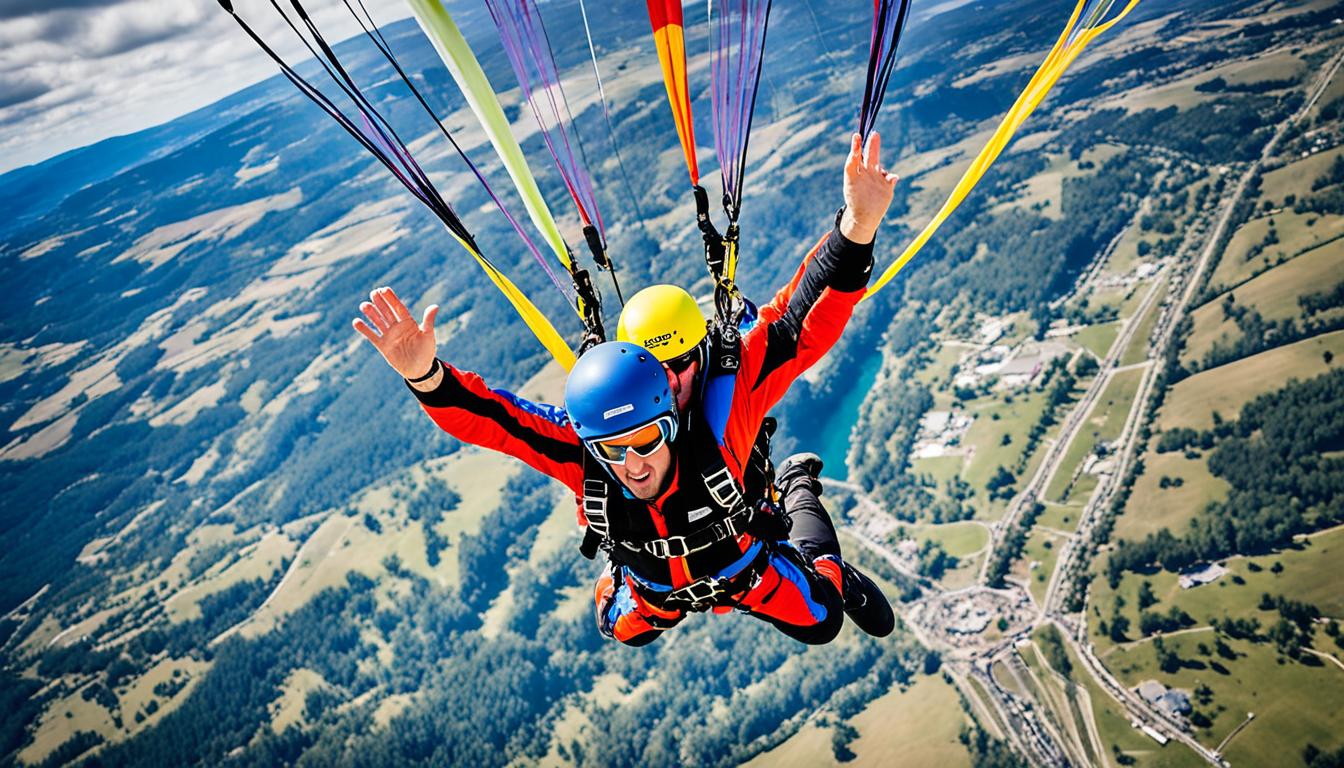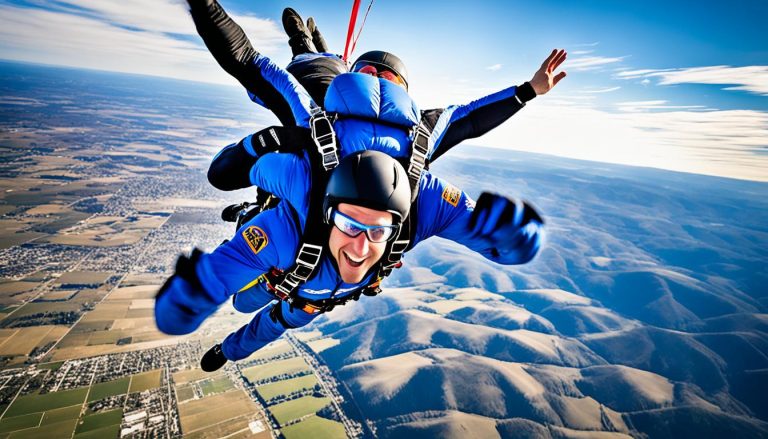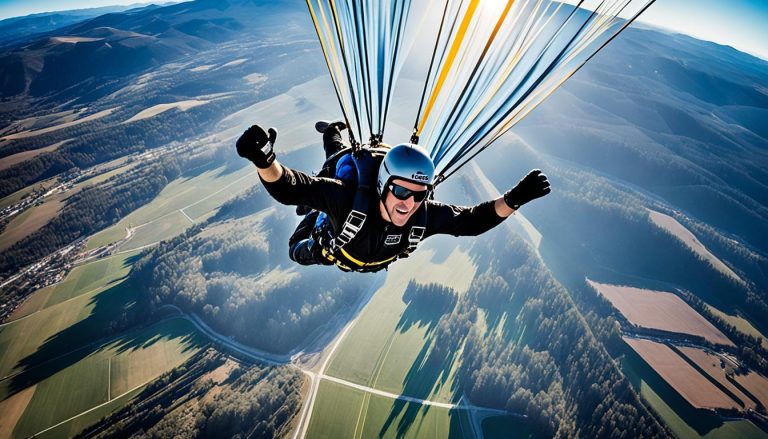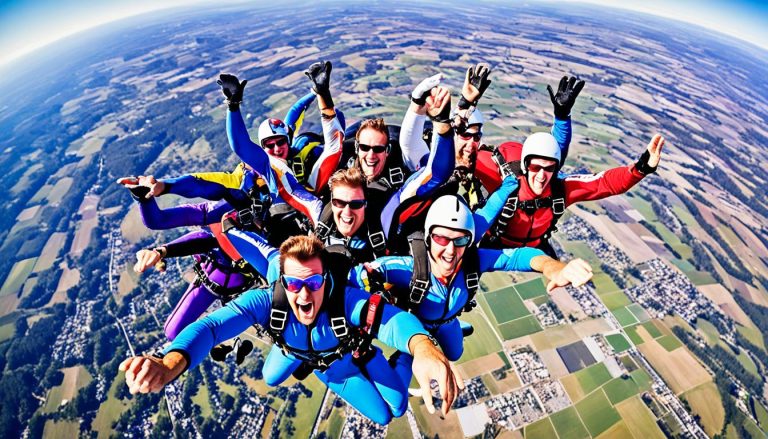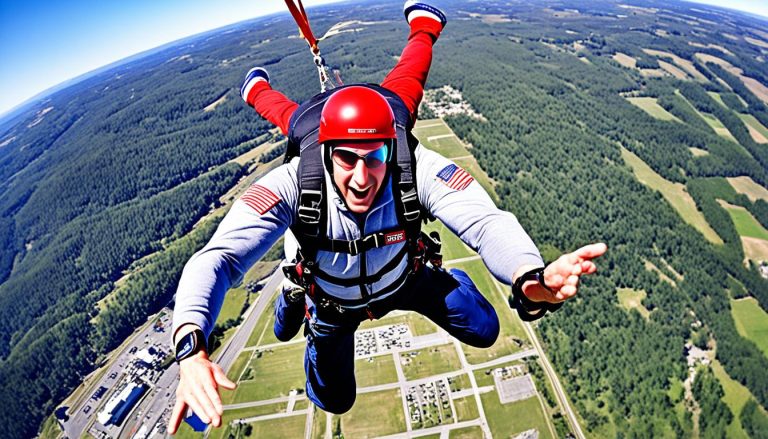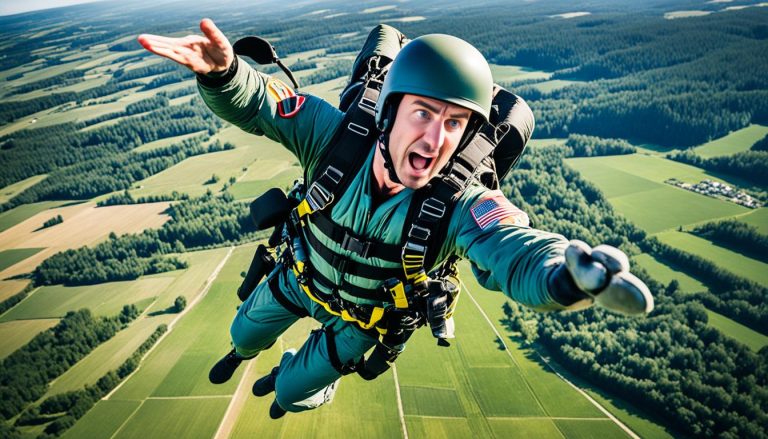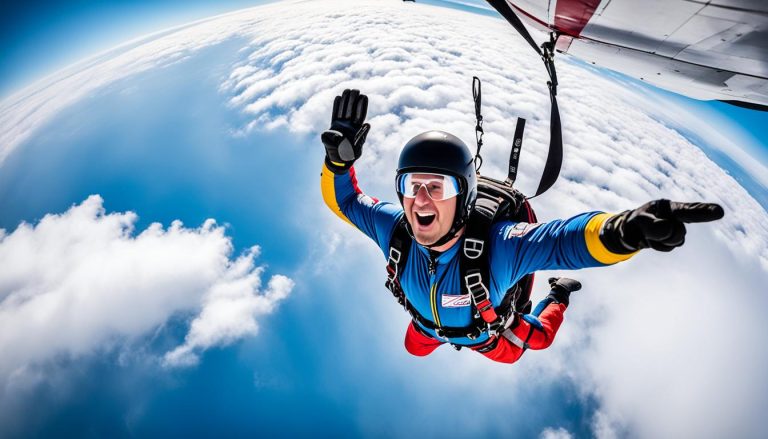Navigating the Winds: Canopy Control Skills for Parachutists
Parachutists need to possess essential canopy control skills in order to safely navigate through the landing pattern. This involves learning how to pilot their canopy and make precise landings. Instructors play a crucial role in teaching students how to navigate the pattern and develop the necessary skills. They use various methods, such as laminated pictures of the landing area, to help students understand wind direction, enter the landing pattern at the correct altitude, and make proper turns. It is important for students to learn how to read the wind sock, make small corrections during flight, and perform a proper flare during landing.
Mastering parachute canopy control and landing techniques is key for a safe and successful skydiving experience. Parachutists who possess strong canopy control skills have the ability to navigate the winds with precision, ensuring accurate turns and landings. Instructors play a vital role in teaching and guiding students, utilizing various methods to develop their skills. By understanding wind direction, following the proper landing procedures, and performing a controlled flare, parachutists can confidently land their canopies.
In the upcoming sections, we will dive deeper into the training and techniques used to teach canopy control skills to parachutists. The classroom serves as the foundation for learning, where students are educated about parachute canopy skills and navigation techniques. We will also explore the importance of training and safety measures for water landings, as well as the exciting world of canopy formations and building canopy stacks. Finally, we will emphasize the significance of proper canopy piloting training for all skydivers, regardless of their experience level.
Teaching Canopy Control in the Classroom
Teaching canopy control skills is an integral part of preparing skydivers for safe and controlled landings. In the classroom, instructors educate students about the fundamental parachute canopy skills, parachute navigation techniques, and skydiving canopy maneuvers. This foundational knowledge equips students with the necessary understanding of the square, stable, and steerable canopies.
During the classroom sessions, instructors emphasize the importance of learning wind direction and its impact on parachute flight. They educate students about their designated “playground” area, where they will practice their landing procedures. Additionally, instructors use aerial pictures of the drop zone to point out hazards and landmarks, ensuring that students are aware of potential risks.
One effective teaching method is the use of laminated pictures as training aids. After students complete their jumps, instructors debrief them using these pictures, comparing the planned landing patterns with the actual ones. This visual approach allows students to better understand the execution of parachute navigation techniques and reinforces the vital importance of safety.
By providing comprehensive classroom instruction on parachute canopy skills, parachute navigation techniques, and skydiving canopy maneuvers, instructors lay the foundation for successful canopy control.
Example Aerial Picture of a Drop Zone
This example image illustrates the aerial perspective of a drop zone, highlighting key landmarks and potential hazards that instructors use to educate students.
Water Landings: Training and Safety Measures
Water landings can occur in both intentional and unintentional situations, and it is crucial for parachutists to undergo proper training to enhance their chances of survival in these scenarios. Unintentional water landings are often the result of spotting errors, wind changes, malfunctions, or landing under a reserve canopy. On the other hand, intentional water landings require specific training and safety procedures to ensure a successful outcome.
For unintentional water landings, theoretical classroom lessons are conducted to educate parachutists about techniques for avoiding water hazards and to prepare them for water entry. This training equips participants with the knowledge required to assess and mitigate risks associated with unintentional water landings. However, theoretical lessons alone are not sufficient. To enhance their skills further, parachutists engage in wet training exercises in suitable environments such as swimming pools or lakes. During these wet training sessions, participants practice escaping from the equipment while wearing a parachute harness, simulating real-life water landing scenarios.
On the other hand, intentional water landings require meticulous preparation and adherence to safety measures. Proper equipment checks, thorough briefings, and the use of altimeters are essential for ensuring a safe and successful water landing. By following these procedures and employing proper aerial canopy control techniques, parachutists can increase their parachute landing accuracy and reduce the risk of injury during water landings.
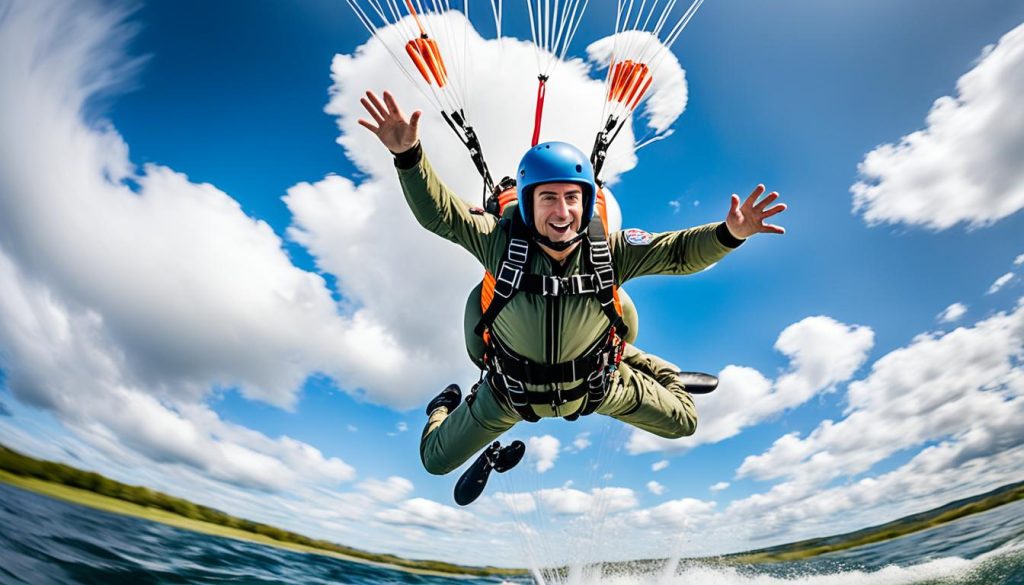
Example Table: Water Landing Checklist
| Water Landing Checklist | Description |
|---|---|
| Equipment Checks | Thorough inspection of all parachute equipment, including reserve canopy and flotation devices. |
| Briefings | Clear and detailed briefings covering water landing procedures, wind conditions, and potential hazards. |
| Altimeter Usage | Utilization of altimeters to determine the correct altitude for initiating the water landing sequence. |
| Aerial Canopy Control | Employing proper techniques for controlling the parachute canopy during descent and landing. |
| Water Entry | Executing a controlled and safe entry into the water, followed by swift equipment removal to facilitate swimming and flotation. |
| Emergency Procedures | Thorough understanding and practice of emergency procedures, such as untangling from entangled lines or rigging. |
By following this water landing checklist and undergoing comprehensive training, parachutists can enhance their water landing skills and ensure a safer and more successful experience.
Canopy Formations: Building Canopy Stacks
Canopy formations, also known as canopy relative work (CRW), involve intentional maneuvering of two or more open parachute canopies in close proximity or contact with each other during flight. The most basic canopy formation is the vertical joining of canopies in a stack or plane. Canopy relative work requires smooth flow, grace, and precise control between participating jumpers. Experienced canopy formation specialists lead dives and guide participants in building formations. Safety precautions, adequate equipment checks, clear communications, and proper jump order are crucial for successful canopy formations.
“Canopy formations are a thrilling display of teamwork and precision. It’s incredible how multiple parachutes can come together in the sky, creating stunning visual formations,” says Jane Smith, a seasoned skydiver with extensive experience in canopy relative work.
During canopy formations, participants follow a structured process to ensure safety and coordination. Here is a step-by-step guide to building canopy stacks:
- Pre-Jump Preparation:
- Verify equipment: All jumpers should conduct thorough equipment checks to ensure their parachutes are properly functioning.
- Clear communications: Establish a clear communication plan before the jump to ensure that all participants can effectively relay instructions and information in the air.
- Jump Order:
- Determine the jump order based on experience and skill level, with more experienced jumpers leading the formation.
- Plan the Formation:
- Experienced canopy formation specialists devise a plan for the specific formation to be built, considering factors such as canopy sizes, flight paths, and exit points.
- Exit and Deployment:
- The jumpers exit the aircraft in a controlled manner, maintaining proper spacing.
- Each jumper deploys their parachute at the predetermined altitude, ensuring safe separation for canopy flight.
- Formation Building:
- Jumpers use precise control inputs and flight maneuvers to navigate their canopies into the desired formation position.
- Participants work together to ensure the canopies interlock smoothly and securely.
- Formation Breakoff and Landing:
- At the predetermined altitude, jumpers disengage from the formation in a coordinated manner, allowing for individual flare and landing procedures.
- Each jumper performs a controlled landing, maintaining proper separation from other canopies and ensuring safe landings.
Building canopy stacks requires precision, communication, and a strong understanding of canopy flight dynamics. It is crucial to undergo proper training and gain experience before attempting canopy formations. Participating in a canopy formation dive can be an exhilarating experience, showcasing the teamwork and skills of experienced skydivers.
The Importance of Proper Canopy Piloting Training
Proper canopy piloting training is essential for all skydivers, regardless of their skill level and experience. It is crucial to approach canopy piloting with caution and respect, as accidents and injuries can occur if proper techniques are not followed.
Skydivers should prioritize the acquisition of canopy control skills before attempting high-performance maneuvers. Learning to fly their canopies at slower speeds allows skydivers to develop better control and understanding of their parachutes. By mastering the basics of parachute canopy flight, skydivers can enhance their ability to execute precise maneuvers and land safely.
To ensure safe and successful canopy piloting, it’s important for skydivers to incorporate the following practices:
- Use reliable digital instrumentation to monitor altitude and airspeed, aiding in precise control during flight.
- Record detailed notes of each jump, including observations about wind conditions, equipment performance, and any necessary adjustments made during the flight.
- Pre-plan flights using maps and technology to assess potential landing areas, wind patterns, and hazards, allowing for informed decision-making.
- Understand and respect the concept of wing loading, which refers to the ratio of a skydiver’s body weight to the size of the parachute they are using. Proper wing loading ensures optimal performance and control.
- Control the “red mist,” a mindset that can arise from adrenaline and excitement, leading to rushed and potentially dangerous decisions. By maintaining a calm and focused mindset, skydivers can make rational choices that prioritize safety.
- Learn to say no when the conditions are not suitable for skydiving. It is crucial to prioritize personal safety and adhere to established safety protocols.
- Seek guidance from a reputable canopy coach or instructor who can provide valuable insights, feedback, and further training to enhance canopy piloting skills.
Proper canopy piloting training not only improves skydivers’ ability to control their parachutes but also significantly reduces the risk of accidents and injuries. By incorporating these practices into their training and maintaining a cautious approach, skydivers can enjoy a safer and more rewarding skydiving experience.
Conclusion
Navigating the winds and mastering canopy control skills are vital for parachutists to ensure safe and precise landings. Through proper training and education, instructors can teach students how to pilot their canopies, read wind direction, navigate the landing pattern, and make accurate turns and landings. By developing their aerial canopy control, parachutists can confidently maneuver their canopies in various wind conditions, ultimately enhancing their safety and landing accuracy.
Water landings require specific training and safety measures to minimize the risks associated with unintentional and intentional entries into the water. Parachutists must learn appropriate techniques for avoiding water hazards and be prepared to safely enter water when necessary. With proper instruction and practical training, parachutists can develop the skills and knowledge to handle water landings effectively and increase their chances of survival in such scenarios.
For experienced canopy pilots, canopy formations offer an exciting opportunity to build formations and perform synchronized maneuvers in the air. By mastering advanced parachute navigation techniques, these skilled individuals can create stunning displays of teamwork and precision. However, it is crucial for canopy pilots engaging in formation flying to strictly adhere to safety protocols, utilize clear communications, and ensure proper equipment checks to mitigate the risks associated with close proximity canopy flying.
In conclusion, proper canopy piloting training is paramount for all skydivers. By following the principles of aerial canopy control, such as slowing down, using reliable instrumentation, recording detailed notes, pre-planning flights, understanding wing loading, controlling the red mist, learning to say no, and seeking professional guidance, skydivers can enhance their skills and ensure a safer and more enjoyable skydiving experience. Whether it’s mastering the basics or pushing the limits with advanced maneuvers, continuous education and adherence to safety measures are essential for skydivers to navigate the skies with confidence and precision.

